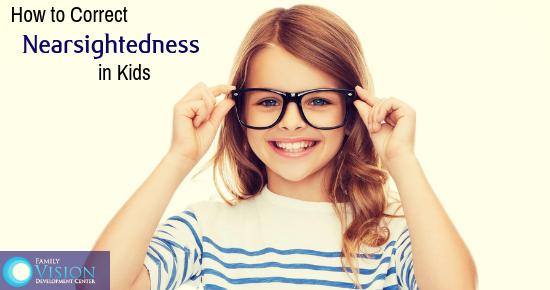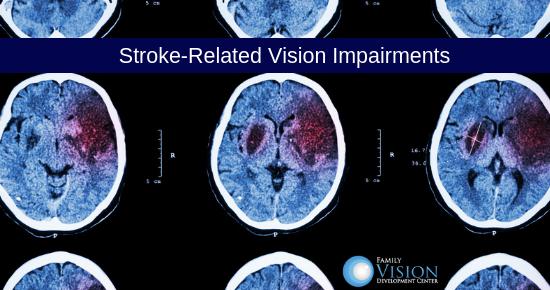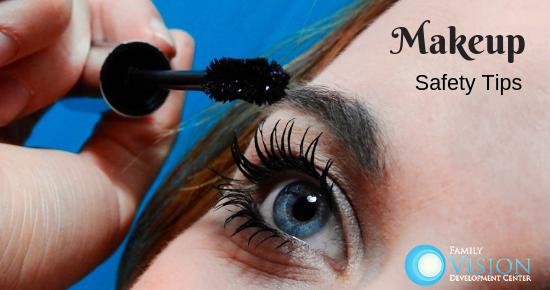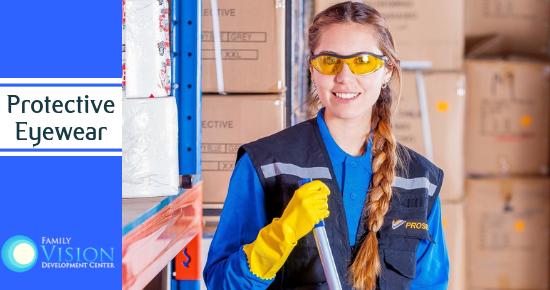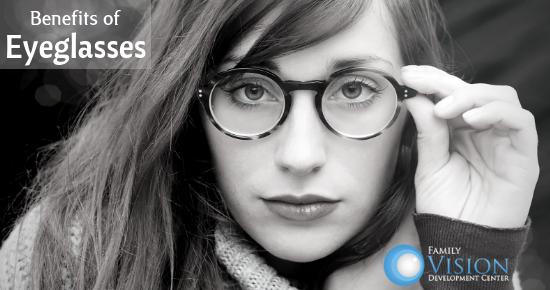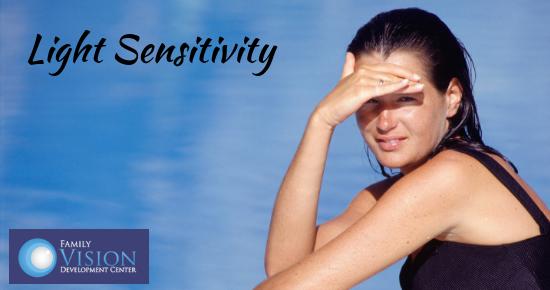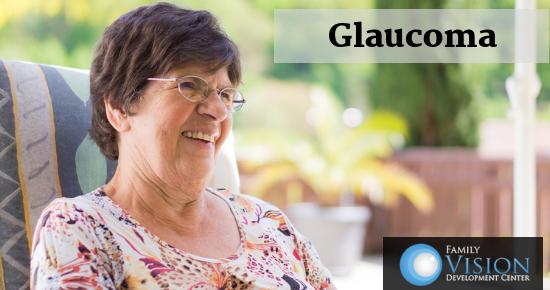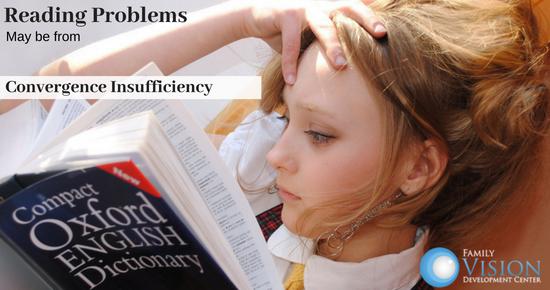We’ve all heard that eating carrots can be good for your eyes, but have you ever wondered why? And did you know that there are many other foods that can help enhance and protect your vision? In fact, studies have shown that certain nutrients, like zinc, copper, vitamin C, vitamin E, vitamin A and beta carotene, can significantly reduce the risk of age-related decline in eye health.
Eat These Smart Foods To Improve Your Vision
- Fish – many types of fish, such as tuna, salmon, trout or sardines, are high in omega-3 fatty acids that can be vital to eye health.
- Nuts, Legumes and Seeds – walnuts, cashews, peanuts, chia seeds and flax seeds are all great sources for omega-3s
- Citrus fruits – fruits like oranges, lemons and grapefruits are high in vitamin C and can help to fight age-related eye damage
- Carrots – this vegetable is often referred to as a vision enhancer and is rich in both vitamin A and beta carotene, which can have a positive effect on vision
- Beef – beef is high in zinc, which is known to delay macular degeneration and improve overall eye health
Choose Foods For The Nutrients
- Vitamin A – Carrots, kale, spinach, dairy products, egg yolks
- Vitamin C – Citrus fruits (especially kiwi fruit) and juices, green peppers, broccoli, potatoes
- Vitamin E – Eggs, whole grains, vegetable oils, sunflower seeds
- Lutein – Spinach, corn, kale, broccoli, Brussels sprouts
- Fatty Acids – Coldwater fish, such as salmon, mackerel, and rainbow trout; sunflower oil, corn oil
- Zinc – Meat, poultry, fish, whole grains, dairy products
Eating the right foods is a great way to be proactive about protecting your vision, but it certainly should not replace regular eye exams with your optometrist. Visit Family Vision Development Center for your comprehensive eye exam, which is the most effective way to detect most eye diseases and conditions. Call us at 630-862-2020 or use our online request form to schedule your appointment.
Referenced articles here and here
If your child is experiencing nearsightedness, or myopia, it means that they can clearly see objects that are close, but objects in the distance look blurry or out of focus. In a school setting, this means they have no trouble seeing the pencil and paper at their desk, but they may have difficulty reading what is written on the smart board at the front of the room.
What Causes Myopia
Myopia occurs when the eyeball is too long from front to back, or if the cornea is too curved. This causes the eye’s lens to focus an image in front of the retina, instead of on the retina, resulting in distant objects looking blurred. Heredity is thought to play a large part in the development of myopia, and a child has a greater chance of experiencing the condition if both parents also suffer from it. Other evidence points to environmental factors such as lack of time spent outdoors or excessive time spent on close-up work such as reading or working on computers as a possible cause.
Diagnosis Of Myopia
A comprehensive eye exam performed by an experienced optometrist like Dr. Martin at Family Vision Development Center is the way to detect myopia in children. Often, kids will not mention that they are having difficulty with their vision, and standard vision screenings at school will not detect myopia. That’s why it is important to keep them on a regular schedule when it comes to eye exams. Kids should get their vision checked at 6 months, 3 years old, before kindergarten, then annually after age 5.
Treatment Of Myopia
The most common form of treatment for myopia in children is with prescription eyeglasses or contact lenses. The right choice will depend on the age and maturity level of the child and should be discussed with your eye doctor. Regular exams will be necessary, as prescription strengths may need to be increased as the child gets older.
Family Vision Development Center is a full service vision care provider, offering eye care services for the entire family. We emphasize preventative care as well as specialized treatment for many eye diseases and conditions. Call 630-862-2020 for more information or to schedule an appointment.
Referenced articles here and here
A stroke occurs when blood flow to an area of the brain is cut off and brain cells begin to die due to a lack of oxygen. When this happens, abilities that are controlled by the affected area of the brain can be impaired. Vision disturbances often occur after a stroke and vision therapy can be implemented as a form of treatment. Some forms of vision impairment resulting from a stroke include the following:
Spatial Inattention
Commonly referred to as “neglect”, this form of impairment causes a person to ignore everything on the side of the brain that was affected by the stroke (for example – leaving food untouched on the left side of a plate, or not shaving the left side of the face). In some cases, they might not even realize that side exists. Vision therapy can include learning to scan from side to side, or working with prisms or mirrors, in order to re-learn how to process information on that side.
Double Vision
Seeing two objects instead of one can be an effect of a stroke in the brainstem. The muscle weakness resulting from a stroke can cause double vision, or diplopia, and can be effectively treated with vision therapy through the use of exercises that encourage the eyes to work together.
Eye Movement Problems
Impaired eye movement are common after a stroke and can include an inability to follow objects with your eyes or move smoothly between objects, or quick, jerky eye movements that cause blurriness or dizziness. Visual rehabilitation can help alleviate these symptoms and restore the ability to perform everyday functions like reading or walking.
It is important to remember that not all visual impairments happen immediately after a stroke, so if you have experienced a stroke it is important to see your eye doctor regularly to ensure that any newly resulting vision issues are diagnosed and treated as soon as possible. Dr. Martin at Family Vision Development Center is specially trained in advanced vision therapy techniques. He will conduct a thorough exam to properly diagnose any stroke-related vision conditions and determine the most effective treatment options. Schedule your appointment online or call 630-862-2020.
Referenced articles here and here
Many people have a love of makeup and regularly apply it before leaving the house for the day, without ever thinking of the possible negative effects it may have on their eyes. Here are some ways to keep your eyes protected when using makeup.
Don’t Keep Makeup For Too Long
Makeup does not last forever, and abiding by the expiration dates is very important for the health of your eyes. Bacteria can easily be trapped in your cosmetics containers and transferred to your eyes, causing irritations, infections or styles, so it’s important to replace your products regularly.
Wash Your Tools
Makeup brushes and eyelash curlers can also collect bacteria and dirt over time, which can get into your eyes or your contact lenses when using them. Cleaning them regularly can help you avoid unnecessary infections or irritations.
Don’t Apply Makeup On The Move
Multitasking is great, but not when it comes to applying makeup. Trying to put on mascara or eyeliner while in a moving vehicle is not only dangerous to others on the road, but it can spell disaster for your eye if you hit a bump or pothole. Scraping the surface of your eye can cause a corneal abrasion, which is an extremely unpleasant and painful injury.
Wash Off Your Makeup Every Night
Even if you are extremely tired and just want to climb in bed and fall asleep, it is important to thoroughly wash off your makeup before hitting the pillow. Letting your eye makeup build up on your eyes only increases the chance of harmful bacteria forming and causing an infection. It is also important to use a proper cleanser, with a gentle formula that will remove all traces of makeup without irritating the eyes.
Makeup can be a fun way to enhance your look, but care should always be used to ensure that your eyes stay protected. At the Family Vision Development Center, we take pride in the comprehensive care we provide to our patients, from regular eye exams to treatment of eye disorders or injuries. Contact us at 630-862-2020 to learn how we can help with all of your eye care needs.
Referenced article HERE
Diabetes is a condition in which the body either does not produce enough insulin or is not able to use the insulin effectively. As a result, the glucose in the blood (often called blood sugar) becomes too high. The disease can cause damage throughout the body, including the eyes.
What Is Diabetic Retinopathy?
Diabetic retinopathy is a serious complication of diabetes which causes progressive damage to the retina. It occurs when blood vessels, that have been damaged due to diabetes, leak blood and other fluids, causing the retinal tissue to swell, and results in cloudy or blurred vision. If left untreated, diabetic retinopathy can lead to blindness.
Symptoms Of Diabetic Retinopathy
Symptoms of diabetic retinopathy may include the following:
- Seeing spots or floaters
- Blurred vision
- Having a dark or empty spot in the center of your vision
- Difficulty seeing well at night
In the early stages of the disease, symptoms may be very mild or even go unnoticed. As it progresses into more advanced forms, the symptoms will get progressively worse. Early detection can greatly reduce the chance of vision loss due to this disease, and therefore regular comprehensive eye exams are extremely important for anyone with diabetes.
Diagnosis And Treatment Of Diabetic Retinopathy
Diabetic retinopathy is diagnosed by your eye care professional, like Family Vision Development Center, through a comprehensive eye exam. Dr. Martin will complete a patient history and will perform the proper testing to evaluate the macula and retina in order to determine the presence of the disease.
Treatment will vary depending on the extent of the disease. Possible options may include medication injections to decrease inflammation or laser surgery to seal leaking blood vessels. Again, early detection can significantly reduce the treatment needed to control the progression of the disease. Call Family Vision at 630-862-2020 to schedule an appointment for your eye exam or use our convenient online appointment request form.
Referenced article HERE
Eyes are very susceptible to injury, and there are many different types of environments that warrant wearing protective lenses. Here are some situations where protective eyewear could save your vision:
At Work
If you work in an environment where you encounter flying debris, particles, dust or dangerous materials, safety goggles should always be worn for protection. Jobs that involve working with chemicals, construction work or welding are all occupations where protective eyewear is a necessity to avoid potential injury.
When Playing Sports
Regular prescription glasses or contacts do not protect against eye injuries, so special protective eyewear with impact-resistant lenses should be worn when playing sports that involve a ball, a puck, a racquet or anything that might hit you in the face. But flying objects are not the only hazard. Many eye injuries come from pokes or jabs by fingers and elbows, especially during games where players are in close contact with each other.
When Out In The Sun
You may not think of sunglasses as protective eyewear, but they most definitely fall into this category. The sun’s UV rays are very harmful to your eyes, and extended exposure has been linked to eye damage such as cataracts and macular degeneration. Always look for sunglasses that block 100 percent of both UVA and UVB rays.
In High-Speed Vehicles
Anytime you are in or on a high-speed vehicle, such as a motorcycle, snowmobile, race car or jet ski, for example, a visor or helmet with a protective shield can protect the eyes from high winds or flying debris or dust. The lenses need to be shatterproof, so fragments would be blocked from entering the eye if there was an impact.
Family Vision Development Center in Aurora, IL can provide you with a large selection of eyewear, from the latest fashion designs to the most up-to-date lens technology. Call us at 630-862-2020 to learn more about the role we can play in protecting your vision.
Referenced article HERE
At some point in most people’s lives, there will come a time when vision correction is needed. Here are some advantages to wearing eyeglasses.
Improve Your Vision
Of course, the main reason a person would wear glasses would be to improve their vision. Just like maintaining our health in other ways, eye health should also be a priority. As we age, our eyesight tends to deteriorate. It may become more difficult to read fine print and corrective lenses are often needed. At all ages, there are many conditions that can compromise vision, but regular eye exams can often provide early detection and allow for treatment with eyeglasses.
Benefits Of Eyeglasses Over Contact Lenses
Given the choice of eyeglasses or contacts, there are a number of reasons why eyeglasses might be the better option.
- They can protect eyes from trauma – glasses can provide a level of protection against common irritants such as dust, sand, grass or even insects when participating in everyday activities like taking a walk, playing outside or mowing the lawn.
- UV protection – sunglasses and even some varieties of eyeglasses can contain lenses that block harmful UV rays from damaging the eyes.
- Convenience – glasses require much less cleaning and maintenance than contacts, are often considered to be more comfortable to wear, and have a far lower chance of being lost than contacts.
Eyeglasses Allow You To Show Personal Style
Eyeglass frames come in a wide variety of shapes and colors and changing your look can be as easy as trying out a new pair. You can keep up with new trends by upgrading to the newest fashion lines, or you can maintain your own personal style by matching your frames to your favorite wardrobe items.
Family Vision Development Center has a great selection of eyeglasses to fit any style. After a thorough eye exam Dr. Martin will determine the appropriate prescription, so your glasses not only look good, but your vision will be properly corrected as well. Contact us at 630-862-2020 or use our online appointment request form to make your appointment.
Full referenced articles HERE and HERE
Photophobia, or light sensitivity, is a condition in which light hurts your eyes. Exposure to light can cause pain or discomfort, as well as the need to close or squint your eyes. Photophobia is not an eye disease, but rather a symptom of a number of possible conditions.
Migraines
Migraines are severe headaches that can be triggered by a number of factors, such as hormonal changes, stress or the environment. Light sensitivity is a very common symptom of migraines and many people feel the need to dim the lights during a migraine attack in order to help ease the pain.
Conditions That Affect The Brain
Photophobia can be associated with certain serious conditions that are caused by inflammation in or surrounding the brain, or bleeding near the brain, such as encephalitis, meningitis or subarachnoid hemorrhage. These conditions can be life-threatening and immediate care should be sought if they are suspected. Photophobia can also be caused by mild traumatic brain injuries (mTBI) or concussions.
Conditions That Affect The Eyes
Light sensitivity can also be caused by a number of eye conditions including:
- Dry eye syndrome – tears do not provide adequate moisture
- Conjunctivitis – also known as “pink eye”
- Cataracts – cloudy coverings over the lenses of the eyes
- Corneal abrasion – a scratch or injury to the cornea
- Scleritis – inflammation of the white part of the eye
Treatment For Photophobia
Treating light sensitivity is most often accomplished by addressing the specific underlying condition. To ease the symptoms of photophobia, try avoiding bright sunlight or wear brimmed hats, dark tinted sunglasses, polarized sunglasses or eyeglasses with photochromic lenses which darken automatically outdoors.
To understand the treatment options available for certain eye conditions, it is best to consult your eye doctor. Family Vision Development Center can diagnose and manage many types of ocular conditions, as well as provide a wide range of eyewear options. Visit our convenient Aurora location or call 630-862-2020 to schedule an appointment.
Full referenced articles HERE and HERE
Glaucoma is an eye disease in which fluid builds up and causes pressure on the front part of the eye. It is a relatively common disease in older adults, but if left untreated it can cause damage to the optic nerve or lead to loss of vision or even blindness.
Types Of Glaucoma
Primary Open-Angle Glaucoma – this type happens gradually, as eye pressure builds due to poor fluid drainage in the eye. There may be little to no symptoms at first but as the disease progresses, blind spots can develop in your peripheral vision. Regular eye exams can detect damage to the optic nerve before symptoms have begun to appear.
Angle-Closure Glaucoma – eye pressure rises very quickly due to the drainage angle being completely blocked. This acute attack is a true emergency and you need to contact your eye doctor right away. Some symptoms of this type of attack include sudden blurry vision, severe eye pain, headache, nausea, vomiting or the appearance of rainbow-colored rings around lights.
Glaucoma Treatment
Glaucoma damage is permanent and cannot be reversed. But there are a number of options that can help prevent further damage from occurring. Typically it is treated with medicated eye drops that lower eye pressure. Other options include in-office laser surgery which can be effective in helping drain fluid from the eye, or surgery performed in an operating room which creates a new drainage channel for fluid to exit the eye.
Eye Exams Are Crucial For Diagnosis
The only sure way to diagnose glaucoma is with a complete eye exam. Some forms of glaucoma can cause blindness if not treated quickly, but symptoms are often not apparent until the damage is severe and your vision has already been compromised. This is why regular eye exams are so important, as they can detect signs of glaucoma that would otherwise go unnoticed.
At Family Vision Development Center, Dr. Martin will evaluate things like eye pressure, peripheral vision, optic nerve condition and the eye’s drainage angle to test for the presence of glaucoma and determine an appropriate treatment plan. Call 630-862-2020 for more information or to schedule an appointment.
Full referenced article HERE
Convergence insufficiency is the inability to keep both eyes working together at a close distance. To see properly, both eyes must turn inward to view objects that are near, but this condition causes one eye to turn outward. This can result in a variety of problems, and if a child suffers from this condition, the effects on their ability to learn can be profound.
Symptoms
A child with convergence insufficiency must exert more effort to bring both eyes inward while reading which can cause the following to occur:
- Sore eyes
- Headaches
- Squinting or closing one eye
- Double vision
- Difficulty concentrating or completing schoolwork
- Difficulty reading, as the words may appear to float on the page
Diagnoses
Convergence Insufficiency is typically not diagnosed in a routine vision screening that your child may have had for school. It is very important to have a thorough eye exam performed by an experienced optometrist like Dr. Martin at Family Vision Development Center. He will ask detailed questions, get a complete medical history and perform the appropriate tests in order to determine if the condition exists.
Treatment
Depending on the severity of the problem, convergence insufficiency can be treated with eyeglasses, contact lenses or vision therapy, which uses various eye-focusing exercises designed to increase the eyes’ convergence ability.
Family Vision Development Center will help you maintain your eye health at all ages, from annual eye exams to more complex issues requiring advanced treatment options. Contact us at 630-862-2020 or read more about us at www.fvdcpc.com.
Full referenced articles HERE and HERE



